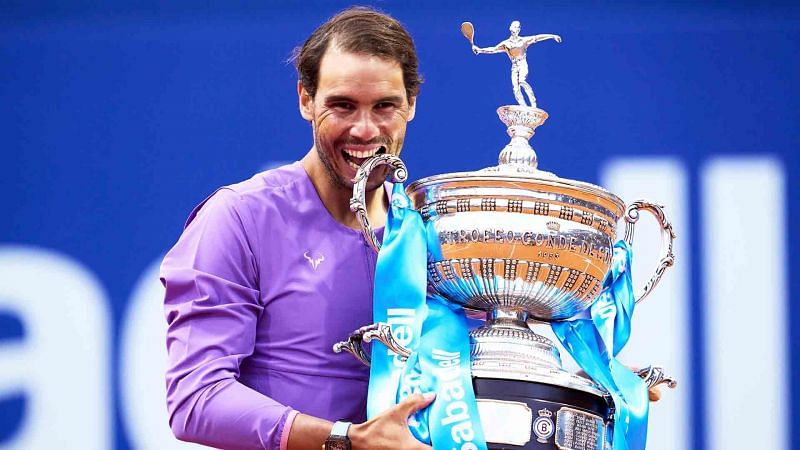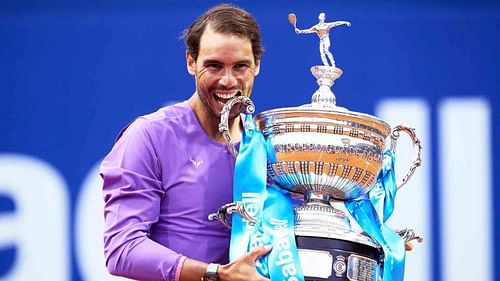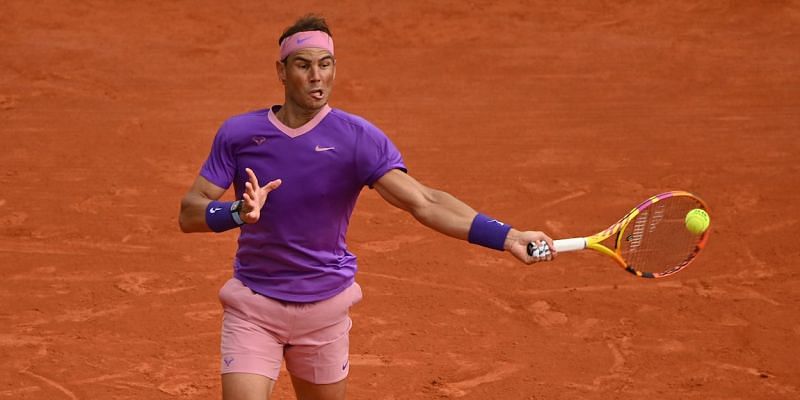
Barcelona Open 2021: 3 things we learnt from Rafael Nadal's title run

Rafael Nadal beat Stefanos Tsitsipas 6-4, 6-7, 7-5 in a grueling final on Sunday to win his 12th Barcelona Open title. It was Nadal’s 87th career title, and his 61st title on clay, underlining both his 'King of Clay' and 'GOAT' credentials.
The greatest claycourter of all time was seriously challenged on his favorite surface by Tsitsipas, but he held his nerve to ultimately get over the line. Notably, this was Tsitsipas' first loss on clay this season; the Greek had managed to win the Masters 1000 title at Monte Carlo, and had come into the Barcelona final riding a nine-match winning streak.
On that note, here's a look at three things we learned from Rafael Nadal's monumental effort this week:
1. Rafael Nadal remains the favorite for the remainder of the European claycourt season
With his unparalleled career record on the surface, Rafael Nadal is usually the favorite to win any claycourt tournament he plays in. This year will be no exception, as the Spaniard is now the favorite to sweep the Madrid Masters, the Rome Masters and the French Open.
Nadal would look to win a mind-boggling 14th French Open title in June and in the process surpass Roger Federer's record tally of 20 Grand Slam titles. He would also have his sights set on the remaining two clay Masters 1000 titles this season; his failure to win the Monte Carlo Masters seems like a distant memory now.
Nadal has bounced back strongly from his loss to Andrey Rublev a couple of weeks ago, and should be expected to extent his unmatched record on clay.
2. Rafael Nadal's ability to bounce back from unfavorable situations is as strong as ever
It is a well-known fact that Rafael Nadal is capable of bouncing back repeatedly from adverse situations, and he demonstrated that commendable trait yet again at Barcelona. Nadal played three three-setters en route to the title, and had to save a Championship point in the final against Tsitsipas.
Earlier in the week, Nadal came from behind to win the last two sets against qualifier Ilya Ivashka to avoid getting knocked out at the very first hurdle. The 34-year-old also didn't let the momentum swing irrevocably in favor of Kei Nishikori after the latter had won the second set 6-2 in their third-round match.
Rafael Nadal then withstood the challenge from a resurgent Pablo Carreno Busta in the first set of their semifinal match-up. And finally, the World No. 2 didn't allow Tsitsipas to run away with the match after the latter had won a second set tie-break.
3. Rafael Nadal seems to have conquered the weaknesses that plagued him at Monte Carlo

Rafael Nadal was jittery and error-prone in his loss to Andrey Rublev at Monte Carlo, and his misery continued during the first set against Ilya Ivashka at Barcelona. His serve was not up to the mark, the unforced errors kept piling up, and he was also not able to hit his forehand with the usual aplomb.
However, Nadal's serve gradually improved from the match against Nishikori. The Spaniard's first serve ratio, which hovered around the 50% mark in the matches against Rublev and Ivashka, improved to around 65% in the semifinal and final at Barcelona.
He was also able to instill some venom into his second serve, which his opponents found difficult to handle.
Moreover, the topspin forehand, Rafael Nadal's primary weapon, was back to its best towards the business end of the tournament. The 34-year-old kept pushing his opponents into their backhand corner with the help of that shot, and then unleashed an inside-out forehand winner into the open court.
Nadal hit as many as 27 forehand winners in the final against Tsitsipas, and was almost unstoppable in the semifinal against Carreno Busta.